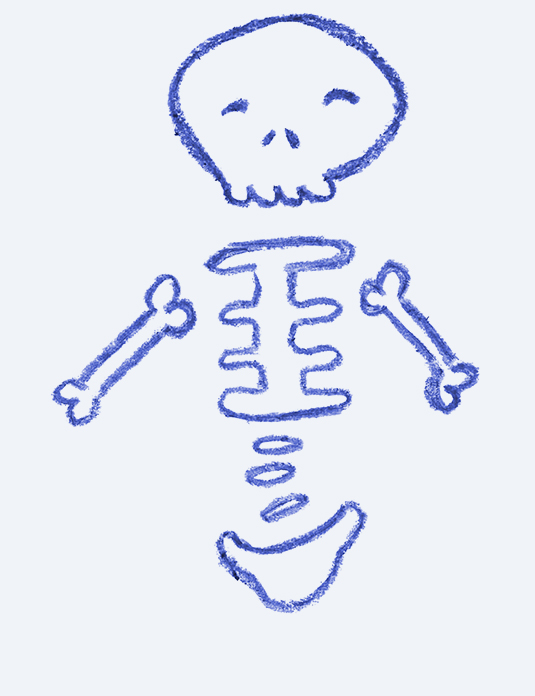
Pediatric Rehabilitation Technology Hub
To better heal children suffering from an acute medical problem, a genetic disorder, a chronic condition or a traumatic injury, as well as those who have been in an accident or were born preterm: this is the primary mission of the CHU Sainte-Justine’s Marie Enfant Rehabilitation Centre (CRME).
Each year in this facility, 250 health care professionals and 15 researchers treat and follow more than 5,000 children. The services they provide are focused on maximizing long-term quality of life, which involves treating children as early as possible, helping to compensate for any physical and sensory deficits, and prioritizing children’s participation in their social environment to give them the chance to reach their full potential.
Your support for Healing More Better has allowed us to take advantage of the critical mass of professionals, experts and patients brought together at the Centre to create a technology hub.
The goal is to bring together players in the fields of research, education and clinical services to foster a multidisciplinary (engineering, kinanthropology, orthopedics, physiotherapy, ergonomics, occupational therapy, speech therapy, linguistics, audiology, pediatrics, neuroscience, social psychology and many more) approach to rehabilitation.
The next step is to establish a lasting partnership between organizations specialized in research and technological development on one hand and the health care sector on the other. Even more productive than expected, this partnership formula is allowing us to entertain the idea—impossible to imagine yesterday—of redefining the meaning of “rehabilitation” by accelerating research into regenerative therapy using stem cells and genomics.
TransMedTech Institute
Scientific innovation is essential to medical progress, but it takes time and patience. The transition from the emergence of a solution to its regular application in health care settings can often take years, or even decades. And if innovations are developed abroad, it may take even longer, as they must first be validated in their country of origin before being imported, validated and used here. This is time that can make all the difference.
“TransMedTech is a whole new way of approaching healthcare research and innovation,” says Professor Carl-Éric Aubin, the executive and scientific director of the TransMedTech Institute. “Its cornerstone is its Living Lab, an open-innovation ecosystem that will be located at the CHU Sainte-Justine. By breaking down barriers between research, medicine, industry R&D and health care delivery, we are establishing an extremely fertile environment for the sharing of expertise and the mobilization of knowledge, where everyone learns from each other’s experience and know-how. Every idea, whether it originates with a researcher, a physician, an engineer, a patient or an industry professional, can help bring about a solution, which is then validated. We’re talking about true collective intelligence.”
The TransMedTech Institute formalizes the alliance between the CHU Sainte-Justine and academic, government, social and industrial partners. It channels information from our health network, biomedical product and service providers and the general public to provide public policy makers with a better understanding of the needs of patients and health professionals.
Right now, thanks to you, the TransMedTech Institute is preparing to soon implement innovative solutions in the areas of musculoskeletal disorders, cardiovascular disease and cancer.


Centre of Excellence for Imaging and New Surgical Technology
Each year, hundreds of children and adolescents are treated at the CHU Sainte-Justine because they suffer from complex pathologies, including congenital malformations, musculoskeletal disorders, traumatic injuries, cardiac and neurological diseases and others.
As a global leader in pediatric health care, the CHU Sainte-Justine is determined to find ways of reducing the duration and traumatic nature of surgical procedures, the convalescence period and the risk of complications.
Through your support for the Healing More Better campaign, Dr. Stefan Parent and Professor Carl-Éric Aubin, specialists in experimental surgery and mechanical engineering respectively, have been provided with the means to create an integrated network of multidisciplinary experts, the only one of its kind in the world, with the goal of developing THE optimal operating room.
This initiative is based on the idea that, by working together, engineers and surgeons will be able to design, develop, test and adapt medical devices on site and at a pace never seen before in Quebec.
This operating room will offer state-of-the-art multimodal imaging, prototyping, computer-assisted surgery and simulation training. As with other imaging modalities in other areas, these advances and their integration into the operating room already resulting in significant performance improvements. This degree of sophistication in medical imaging makes it possible to use biomedical implants, thereby radically reducing the number of invasive surgeries and the trauma associated with them.


